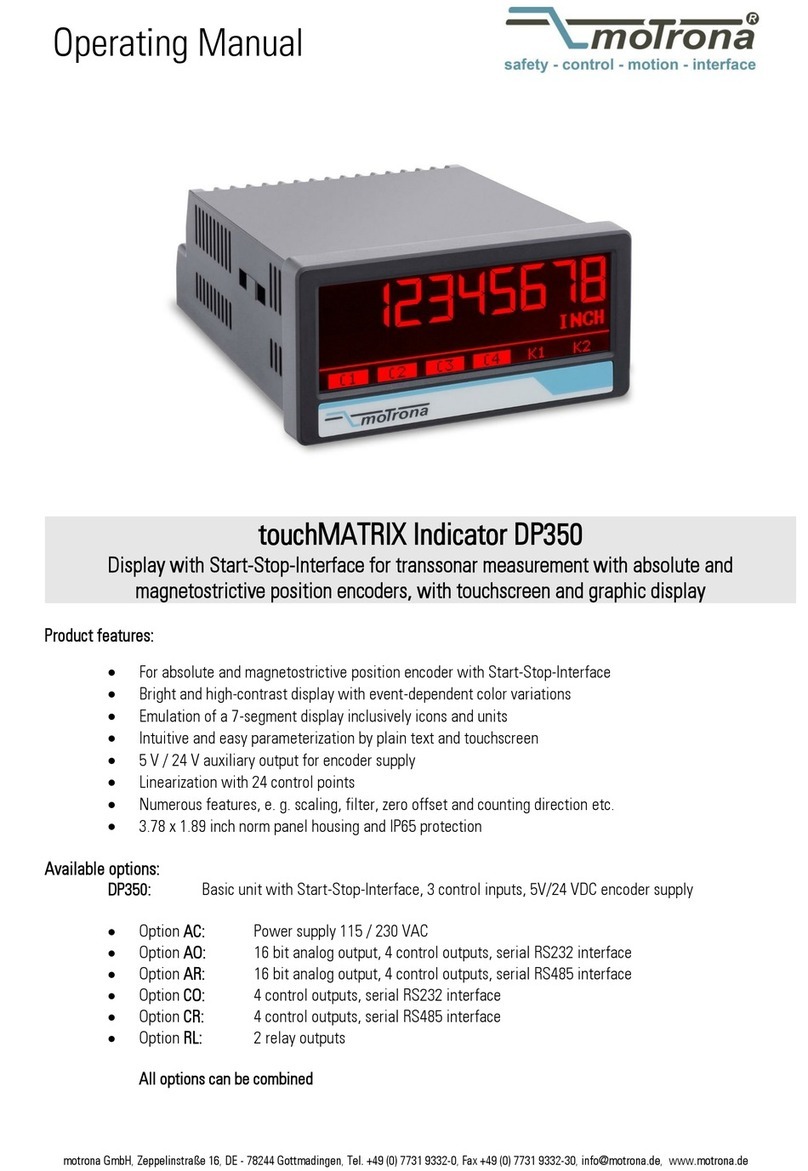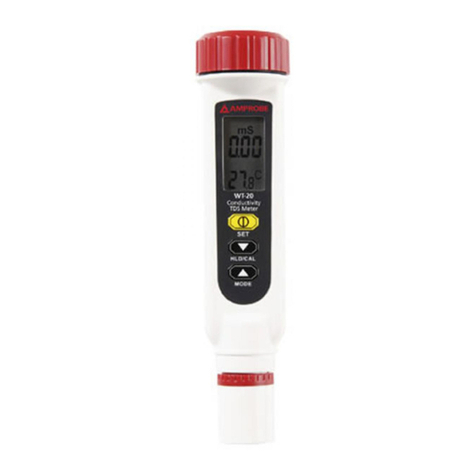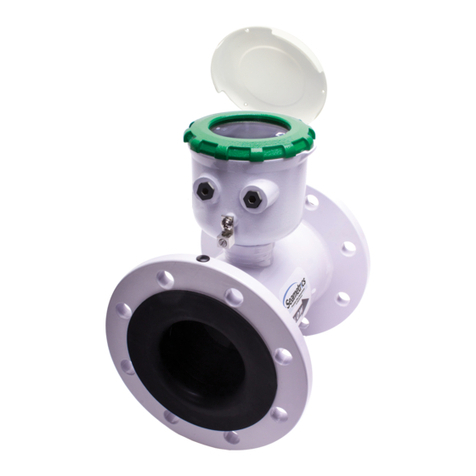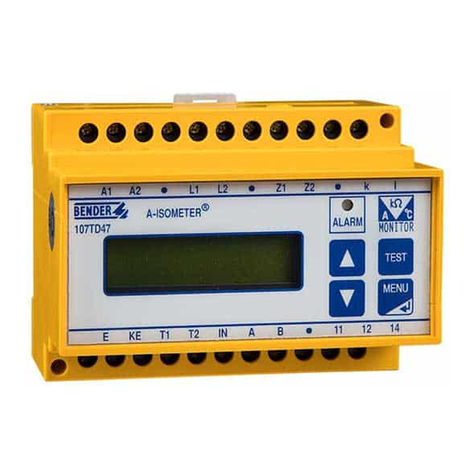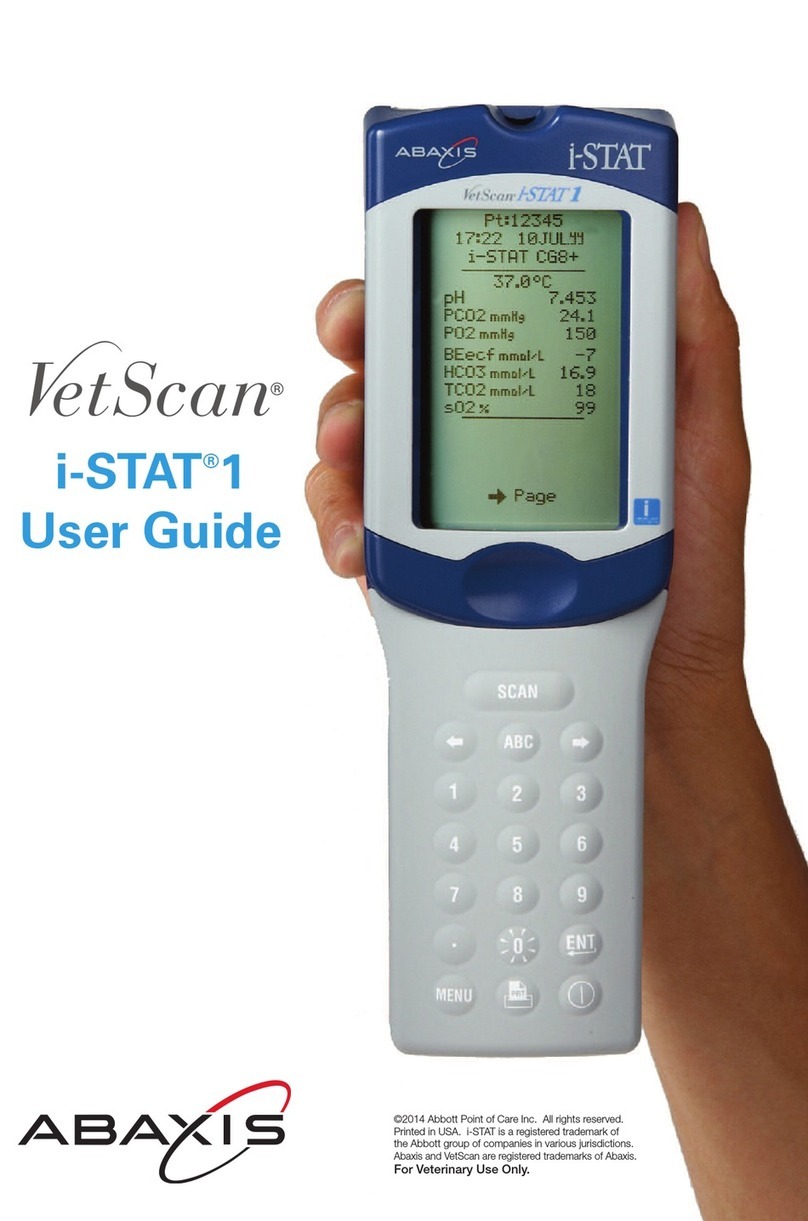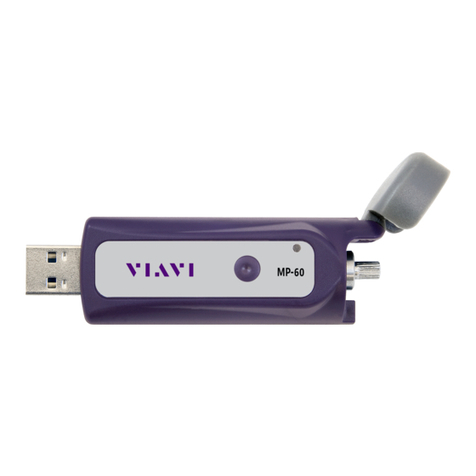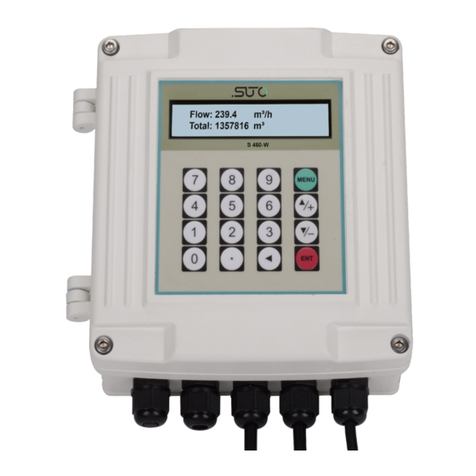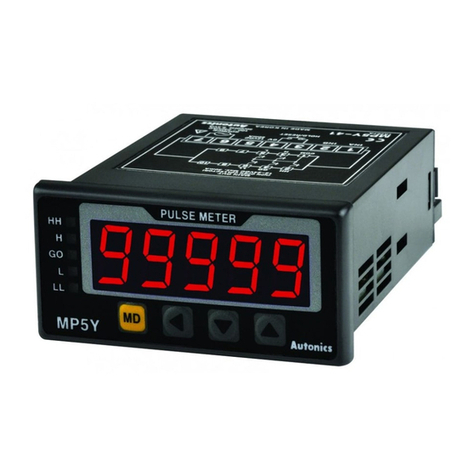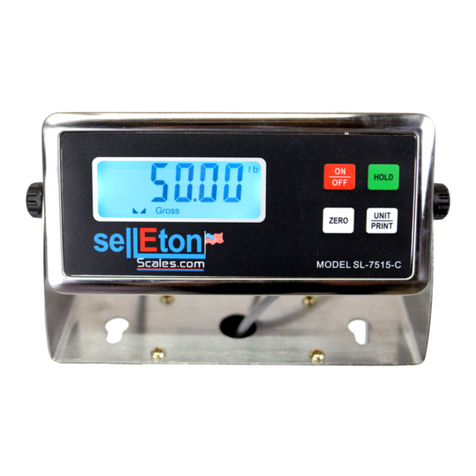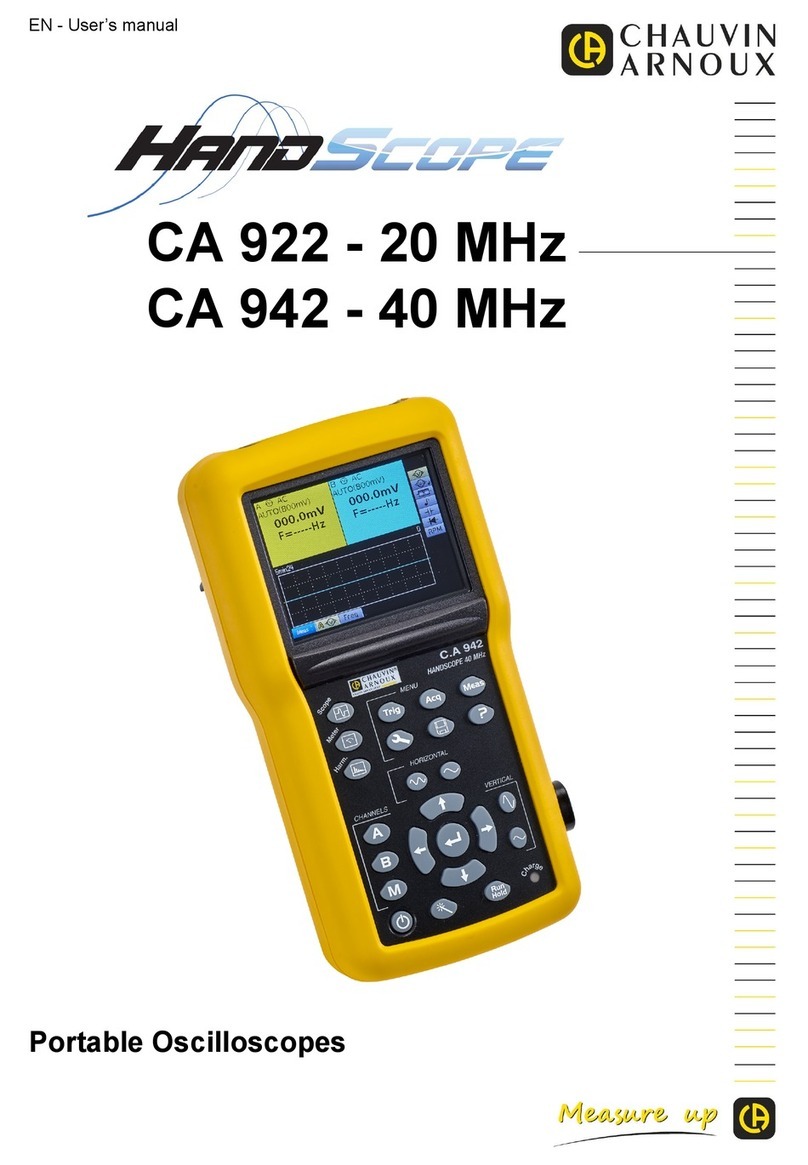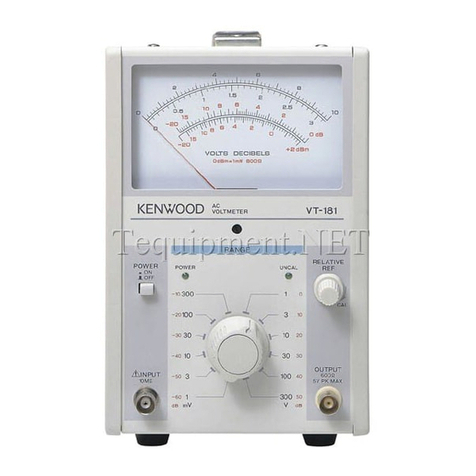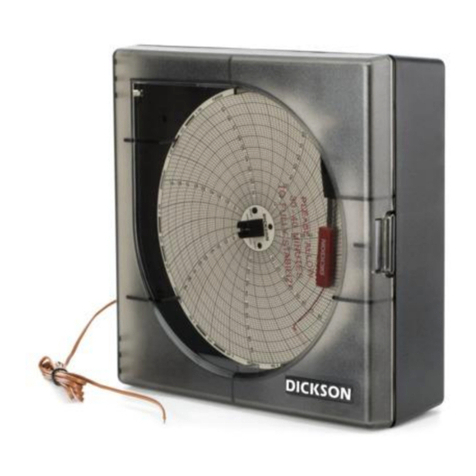Sea-Bird Scientific OCR-504 User manual

Product Manual
OCR-504
Multispectral Radiometer
Document No.
Release Date:
Version:
Firmware:
Software:
SAT-DN-00034
May 21, 2013
G
SatNet Type B
n/a
seabird.com
© Copyright 2017 Sea-Bird Scientific

Operation Manual
SYSTEM
OCR-504 Multispectral Radiometer
SECTION
TABLE OF CONTENTS
A - OVERVIEW ............................................................................................................................ A-1
PURPOSE ....................................................................................................................................A-1
BACKGROUND..............................................................................................................................A-1
FEATURES ...................................................................................................................................A-1
OCR-504 CONFIGURATIONS ........................................................................................................A-2
STANDARD OCR-504...................................................................................................................A-3
DEEP OCR-504ICSW.................................................................................................................A-5
AUV OCR-504ICSW..................................................................................................................A-7
INTEGRATED OCR-504 CONFIGURATIONS ....................................................................................A-9
SPECIFICATIONS FOR IRRADIANCE CONFIGURATION -NOMINAL CHARACTERISTICS .......................A-11
SPECIFICATIONS FOR RADIANCE CONFIGURATION -NOMINAL CHARACTERISTICS..........................A-12
B - SAFETY & HAZARDS ........................................................................................................... B-1
PERSONAL SAFETY ......................................................................................................................B-1
INSTRUMENTS..............................................................................................................................B-1
CABLE.........................................................................................................................................B-1
CONNECTIONS .............................................................................................................................B-1
TROUBLESHOOTING .....................................................................................................................B-2
RECOVERY ..................................................................................................................................B-2
C - START UP.............................................................................................................................. C-1
ASSEMBLY PROCEDURE .............................................................................................................. C-1
Preparation............................................................................................................................ C-1
Connecting the Components ................................................................................................ C-2
Network Assembly ................................................................................................................ C-3
CONDUCTING A TELEMETRY TEST................................................................................................ C-3
D - OPERATION .......................................................................................................................... D-1
INITIALIZATION SEQUENCE........................................................................................................... D-1
AUTONOMOUS OPERATION.......................................................................................................... D-2
NETWORK OPERATION ................................................................................................................ D-4
TELEMETRY FORMAT................................................................................................................... D-5
Binary Telemetry................................................................................................................... D-5
Binary Telemetry with Engineering Units.............................................................................. D-6
ASCII Telemetry –Raw ADC Counts Only........................................................................... D-8
ASCII Telemetry –Raw ADC Counts With Calibration Coefficients..................................... D-9
ASCII Telemetry –Optical Data Only, In Engineering Units...............................................D-12
ASCII Telemetry –Optical Data in Engineering Units With Calibration Coefficients..........D-13
E - CONFIGURATION ..................................................................................................................E-1
COMMAND CONSOLE....................................................................................................................E-1
Reset Command ....................................................................................................................E-3
ID Command..........................................................................................................................E-3
Power Command ...................................................................................................................E-4
Set Command ........................................................................................................................E-4
Show Command.....................................................................................................................E-5
Save Command .....................................................................................................................E-7
Sample Command .................................................................................................................E-7
Exit and Exit! Commands.......................................................................................................E-8
OCR-504 CONFIGURATION PARAMETERS.....................................................................................E-8
Sensor Type...........................................................................................................................E-8

Operation Manual
SYSTEM
OCR-504 Multispectral Radiometer
SECTION
TABLE OF CONTENTS
Telemetry Frame Type...........................................................................................................E-8
Telemetry Baud Rate.............................................................................................................E-9
Maximum Frame Rate............................................................................................................E-9
Initialize Silent Mode............................................................................................................E-11
Initialize Power Down...........................................................................................................E-11
Initialize Automatic Telemetry..............................................................................................E-11
Network Mode......................................................................................................................E-12
Network Address..................................................................................................................E-12
Network Baud Rate..............................................................................................................E-12
Optical Data Averaging Enable............................................................................................E-13
Apply Immersion Coefficient Enable....................................................................................E-13
Apply Calibration Coefficients Enable..................................................................................E-14
Telemetry startup latency.....................................................................................................E-14
Calibration Coefficient a0.....................................................................................................E-14
Calibration Coefficient a1.....................................................................................................E-14
Immersion Coefficient ..........................................................................................................E-15
F - RECOVERY.............................................................................................................................F-1
G - MAINTENANCE.....................................................................................................................G-1
PREVENTATIVE MAINTENANCE.....................................................................................................G-1
TROUBLESHOOTING WITH A TERMINAL EMULATOR........................................................................G-1
TROUBLESHOOTING FOR HARDWARE PROBLEMS..........................................................................G-1
Check Connections...............................................................................................................G-1
Check the Supply Voltage to the OCR-504..........................................................................G-2
Check Cable Continuity.........................................................................................................G-3
H - WARRANTY........................................................................................................................... H-1
WARRANTY PERIOD .................................................................................................................... H-1
RESTRICTIONS............................................................................................................................ H-1
PROVISIONS................................................................................................................................ H-1
RETURNS.................................................................................................................................... H-1
LIABILITY..................................................................................................................................... H-1
I - CONTACT INFORMATION.......................................................................................................I-1
LOCATION.....................................................................................................................................I-1
BUSINESS HOURS .........................................................................................................................I-1
J - DECLARATION OF CONFORMITY.........................................................................................I-1
K - MANUAL REVISIONS ............................................................................................................J-1
L - APPENDIX A.......................................................................................................................... K-1
USING WINDOWSHYPERTERMINAL.............................................................................................K-1

Operation Manual
SYSTEM
OCR-504 Multispectral Radiometer
SECTION
A - OVERVIEW
A - OVERVIEW
Purpose
The OCR-504 Multispectral Radiometer is a member of Sea-Bird Scientific’s
line of micro-sensor instruments. The OCR-504 is a fully digital optical sensor
package that combines precision optics and high performance
microelectronics.
Background
The OCR-504 is a complete stand-alone instrument capable of generating
spectral records of light collected in an ocean environment. The OCR-504
utilizes four customer-defined discrete optical wavelengths, selected from Sea-
Bird Scientific's standard list. Two standard, non-isolated, telemetry (data)
interfaces are provided. Each interface uses a different transmission medium.
The RS-232 interface provides transmit and receive capabilities while the
RS-422 interface is transmit-only. A non-isolated RS-485 interface is also
provided for operating the instrument in a SatNet network environment. The
OCR-504 must be powered from a +6 to +22 VDC supply voltage range (25mA
nominal current draw). Instrument telemetry, which is transmitted from the
instrument during normal operation, is compliant with the Sea-Bird Scientific
Data Format Standard1. The format of the telemetry is dependent on the
instrument configuration.
Features
•Compact size
•Light weight
•Low power consumption
•Minimal amount of support equipment required
•Stand-alone or SatNet Network capable operation
•Corrosion proof housing
•Easy to use
1For more information in this data format, refer to the Instrument File Standard document available from Sea-Bird
Scientific.

Operation Manual
SYSTEM
OCR-504 Multispectral Radiometer
SECTION
A - OVERVIEW
OCR-504 Configurations
All OCR-500 series instruments are defined using a model numbering system.
These numbers are composed of three fields containing four selectors, and
have the following format:
OCR-50x-tffm
Where:
x NUMBER-OF-CHANNELS
4 (four channel radiometer)
7 (seven channel radiometer)
t TYPE-OF-RADIOMETER
I (Irradiance)
R (Radiance)
I/R (coupled Irradiance and Radiance)
ff FIELD-OF-VIEW
10 (10 degrees half-angle)
CS (cosine)
M MEDIA
A (Air)
W (water)
For example, an OCR-504-R10W is an OCR-500 series instrument with four
radiance channels, each with a 10° half-angle FOV (Field-Of-View) and is
intended for in-water use.
Please note that not all OCR-504 models are physically equivalent. Several
different configurations have been developed, and are detailed in the following
sections.

Operation Manual
SYSTEM
OCR-504 Multispectral Radiometer
SECTION
A - OVERVIEW
Standard OCR-504
Figure 1 - Standard OCR-504 Configurations

Operation Manual
SYSTEM
OCR-504 Multispectral Radiometer
SECTION
A - OVERVIEW
The standard OCR-504 irradiance and radiance configurations are shown in
Figure 1 (dimensions are in inches). In-air and in-water weights are
approximate. The housing is constructed from Acetron® GP and has a depth
rating of 200 m.
This configuration uses a Subconn MCBH8M connector. Figure 2 illustrates
the connector pin configuration.
1
8
7
6
5
4
3
2
Figure 2 - Subconn
MCBH8M Male Face View
These pins are designated as follows:
Pin
Identification
Description
1
V+
DC Power Supply (6 to 22 Volts)
2
V-/SG
Power Supply Return / Signal Ground
3
TA
RS-422 Telemetry Interface (Transmit A). Balanced
differential serial data from instrument to computer.
4
TB
RS-422 Telemetry Interface (Transmit B). Balanced
differential serial data from instrument to computer.
5
Tx
RS-232 Telemetry Interface. Serial data from
instrument to computer.
6
Rx
RS-232 Telemetry Interface. Serial data from
computer to instrument.
7
NA
RS-485 SatNet™ Network Interface (A)
8
NB
RS-485 SatNet™ Network Interface (B)
Note: Some OCR-504 instruments have been retrofitted with a six-pin
configuration for use in older systems. In these cases, the TA and TB
signals are replaced with NA and NB.

Operation Manual
SYSTEM
OCR-504 Multispectral Radiometer
SECTION
A - OVERVIEW
Deep OCR-504ICSW
Figure 3 - Deep OCR-504ICSW

Operation Manual
SYSTEM
OCR-504 Multispectral Radiometer
SECTION
A - OVERVIEW
The deep version of the OCR-504ICSW is shown in Figure 3 (dimensions are
in inches). The in-air and in-water weights are approximate. The housing is
constructed from PEEK plastic and has a depth rating of 2000 m. This
configuration is typically used with autonomous profiling floats.
This configuration uses a TELEDYNE-IMPULSE IE55-1206-BCR connector.
Figure 4 illustrates the connector pin configuration.
1
3
2
4
6
5
Figure 4 - TELEDYNE-IMPULSE IE55-1206-BCR
The pins are designated as follows:
Pin
Identification
Description
1
V-/SG
Power Supply Return / Signal Ground
2
Rx
RS-232 Telemetry Interface. Serial data from
computer to instrument.
3
NC
Not internally connected
4
V+
DC Power Supply (6 to 22 Volts)
5
Tx
RS-232 Telemetry Interface. Serial data from
instrument to computer.
6
NC
Not internally connected
Please note that the SatNet interface is not normally provided in this
configuration.

Operation Manual
SYSTEM
OCR-504 Multispectral Radiometer
SECTION
A - OVERVIEW
AUV OCR-504ICSW
Figure 5 - AUV OCR-504ICSW

Operation Manual
SYSTEM
OCR-504 Multispectral Radiometer
SECTION
A - OVERVIEW
The AUV version of the OCR-504ICSW is shown in Figure 5 (dimensions are
in inches). The in-air and in-water weights are approximate. The housing is
constructed from anodized aluminum and has a depth rating of 1000 m. This
configuration is typically used with Autonomous Underwater Vehicles, primarily
gliders. The sensor is mounted in the glider science bay at an angle such that
the optics are pointed straight up during ascent (or descent).
As the sensor extends into a watertight science bay, this configuration is
normally provided with a potted wiring harness to provide power to the sensor
and allow RS-232 communication with the sensor. The table below maps wire
colour to function.
Wire
Colour
Identifica
tion
Description
RED
V+
DC Power Supply (6 to 22 Volts)
BLACK
V-/SG
Power Supply Return / Signal Ground
GREEN
Tx
RS-232 Telemetry Interface. Serial data from
instrument to computer.
BLUE
Rx
RS-232 Telemetry Interface. Serial data from
computer to instrument.
When the sensor is used with the TELEDYNE WEBB RESEARCH Slocum
Glider, a custom wiring harness (approximately 10” length) is provided:
Pin
Wire
Colour
Identifica
tion
Description
Connector: Molex 22-01
1
BLACK
V-/SG
Power Supply Return / Signal Ground
2
RED
V+
DC Power Supply (6 to 22 Volts)
Connector: Molex 35507-0500
1
BLACK
V-/SG
Power Supply Return / Signal Ground
2
BLUE
Rx
RS-232 Telemetry Interface. Serial
data from computer to instrument.
3
GREEN
Tx
RS-232 Telemetry Interface. Serial
data from instrument to computer.
4
-
-
Not used
5
-
-
Not used

Operation Manual
SYSTEM
OCR-504 Multispectral Radiometer
SECTION
A - OVERVIEW
Integrated OCR-504 Configurations
Figure 6 - Integrated OCR-504 Configurations

Operation Manual
SYSTEM
OCR-504 Multispectral Radiometer
SECTION
A - OVERVIEW
Several versions of the OCR-504 that have been integrated with other systems
are shown in Figure 6 (dimensions are in inches). In-air and in-water weights
are approximate. The three configurations shown have a depth rating of
2000 m.
As these sensors are normally mechanically integrated with other pressure
vessels, they are normally provided with a potted wiring harness to provide
power to the sensor and allow RS-232 communication with the sensor. The
table below maps wire colour to function.
Wire
Colour
Identifica
tion
Description
RED
V+
DC Power Supply (6 to 22 Volts)
BLACK
V-/SG
Power Supply Return / Signal Ground
GREEN
Tx
RS-232 Telemetry Interface. Serial data from
instrument to computer.
BLUE
Rx
RS-232 Telemetry Interface. Serial data from
computer to instrument.
Termination of the wire harness on a customer-specified connector may be
available on request.

Operation Manual
SYSTEM
OCR-504 Multispectral Radiometer
SECTION
A - OVERVIEW
Specifications for Irradiance Configuration - Nominal Characteristics
Spatial Characteristics:
•Field of view: cosine response (spectrally corrected)
•Collector area: 86.0 mm2
•Detectors: custom 17 mm2silicon photodiodes
Spectral Characteristics:
•Bandwidth range: 400-700 nm (standard - custom also available)
•Number of channels: 4
•Spectral bandwidth: 10 nm or 20nm
•Filter type: custom low-fluorescence interference
Optical Characteristics:
•Cosine response: within 3% 0°–60° / within 10% 60°–85°
•Typical NEI: 2.5x10-3 uW cm-2 nm-1
Operating Characteristics:
•Operating temperature: -4 to +40 C

Operation Manual
SYSTEM
OCR-504 Multispectral Radiometer
SECTION
A - OVERVIEW
Specifications for Radiance Configuration - Nominal Characteristics
Spatial Characteristics:
•Field of view: 10°
•Detectors: custom 13 mm2silicon photodiodes
Spectral Characteristics:
•Bandwidth range: 400-700 nm (standard - custom also available)
•Number of channels: 4
•Spectral bandwidth: 10 nm or 20nm
•Filter type: custom low-fluorescence interference
Optical Characteristics:
•Out of band rejection: 10-6
•Out of field rejection: 5x10-4
•Typical NER: 300x10-6 uW cm-2 nm-1
Operating Characteristics:
•Operating temperature: -4 to +40 C

Operation Manual
SYSTEM
OCR-504 Multispectral Radiometer
SECTION
B - SAFETY & HAZARDS
B - SAFETY & HAZARDS
Personal Safety
•The operators should always remain aware of the cable. Any cable or line
released from a ship can be dangerous. Keep a safe distance from the
cable coil on deck when the instruments are being used.
Instruments
•Do not leave instruments in direct sunlight when not in use. Direct sunlight
can increase the internal temperature of the instrument beyond its
maximum rating.
•Do not leave an in-water instrument unattended. Boat drift can entangle the
cable and cause damage or instrument loss.
Cable
•To prevent damage to the conductors within the Kevlar™ strength member,
ensure the power/telemetry cable is not pinched or bent to a radius less
than 18 cm.
Connections
•Handle electrical terminations carefully, as they are not designed to
withstand strain. Disconnect the cables from the components by pulling on
the connector heads and not the cables. Do not twist the connector while
pulling, as this will damage the connector pins.
•Do not use petroleum-based lubricants on Subconn®connectors.
Connectors should be free of dirt and lightly lubricated before mating. Sea-
Bird Scientific recommends using DC-111 silicone grease (made by Dow-
Corning®) on the male pins prior to connection.

Operation Manual
SYSTEM
OCR-504 Multispectral Radiometer
SECTION
B - SAFETY & HAZARDS
Troubleshooting
•While checking voltages with a multimeter, extreme care should be used to
not short the probe leads. A shorted power supply or battery can output
many amperes of current, potentially harming the user, starting fires, or
damaging equipment.
Recovery
•Remember never to grab the electrical portion of the instrument cable
during recovery. This can cause damage to the power/telemetry bulkhead
and the underwater splice.
•Lens caps should always be replaced as soon as the instrument comes
back on board. This will help protect the heads from direct damage.
•Be sure to rinse seawater from the instrument with fresh water prior to
storage. Corrosion resulting from failure to do so is not covered under
warranty.

Operation Manual
SYSTEM
OCR-504 Multispectral Radiometer
SECTION
C - START UP
C - START UP
Assembly Procedure
PREPARATION
Your OCR-504 Multispectral Radiometer is a simple instrument to setup and
operate. The instrument may be operated as a stand-alone device or in a
networked environment as part of a larger system. Generally, requirements for
operation are the same for both of these operating modes, although a
networked environment may impose additional requirements. You will need the
following items:
•DC power source. Refer to the specifications in section A - OVERVIEW for
the power requirements of your instrument’s configuration.
•Computer with a free serial communications port for telemetry acquisition.
•Power/Telemetry and/or Network interface cables (may be provided).
•Data acquisition and processing software compliant with the Sea-Bird
Scientific Data Format Standard1(may be provided).
•The instrument’s calibration file2(provided).
If you are not using your instrument in an embedded system, or youdo not have
your own data acquisition software, youmay use the software provided by Sea-
Bird Scientific. Two applications3, SatView and SatCon, are available to you for
any PC running Windows®495/98/NT/2000/XP. Both applications are
compliant with the Sea-Bird Scientific Data Format Standard. SatView is a data
acquisition and real-time display application. SatCon is a post processing
application for telemetry logged with SatView.
Note that it is not necessary to use the software mentioned above to log the
instrument telemetry. Any properly configured terminal emulator can serve this
purpose. However, you will need the proper software to interpret any of the
data.
In any case, there are a few standard communications settings needed for any
computer application communicating with the instrument. All serial
transmissions use 1 start bit, 8 data bits, 1 stop bit, and no parity. No flow
control of any kind is used. Make sure that your software is configured with the
baud rate specified for your instrument. These settings apply to both the RS-
232 and RS-422 telemetry interfaces. For most applications, the default
telemetry baud rate is 57600 bps.
2For more information on calibration files, refer to the Instrument File Standard document available from Sea-Bird
Scientific
3For more information on these applications, refer to the user's manuals distributed with the software.
4Windows is a registered trademark of Microsoft Corporation.

Operation Manual
SYSTEM
OCR-504 Multispectral Radiometer
SECTION
C - START UP
IMPORTANT! Both the RS-232 and RS-422 telemetry interfaces transmit
the same information. The RS-232 interface provides bi-directional
communication while the RS-422 is transmit-only. Normally, the RS-232
interface is used for configuring and testing your instrument. The RS-422
interface would normally be used for telemetry acquisition in the field
using longer cables. Most computer serial interfaces are RS-232.
Therefore, if you are using the RS-422 interface on the instrument, a
converter will be required to convert the output from the instrument to
levels compatible with your computer. In most cases, only one of these
telemetry interfaces is provided on a cable.
CONNECTING THE COMPONENTS
When making connections, proper alignment on the connector pins is critical to
avoid damage. Visually ensure that the pins on the male connectors are
properly aligned with (and partially seated into) the sockets on their female
counterparts before pushing them together for final connection. Finally, ensure
that the locking sleeve or locking strap is securely fastened after connection.
The following is a generic step-by-step procedure for setting up your OCR-504
Multispectral Radiometer. You may use this procedure with any Sea-Bird
Scientific approved interface cable:
1. Ensure that, initially, the instrument is completely disconnected from the
power supply.
2. Ensure that the power supply is setup for the proper voltage.
3. If possible, turn off the power supply.
4. Mount the instrument in the desired position.
5. Connect the instrument side of the interface cable to the bulkhead on the
instrument.
6. Connect the telemetry-output side of the interface cable to the serial
interface of the computer. Use an appropriate level converter if needed.
7. Configure any software for use with the instrument.
8. Remove the protective cover from the end of the OCR-504.
9. Connect the power-input side of the interface cable to the power supply.
10. Apply power to the instrument (turn on the power supply).
Once your OCR-504 has been properly connected and power has been
applied, an initialization sequence will begin automatically to ready the device
for normal operation. This sequence takes approximately 4 seconds to
complete. Once finished, the instrument should begin normal operation. See
the Conducting a Telemetry Test section below to make sure that your
instrument is working properly. If this does not happen, remove power from the
instrument and repeat the connection sequence. If you are still experiencing
problems, contact a Sea-Bird Scientific customer service representative for
assistance.
See section D - OPERATION for more information on operating your
instrument.

Operation Manual
SYSTEM
OCR-504 Multispectral Radiometer
SECTION
C - START UP
See section F - RECOVERY for information on recovering and disconnecting
your instrument after use.
NETWORK ASSEMBLY
The OCR-504 is capable of functioning as a stand-alone instrument or as one
node in a network of other SatNet™ network capable instruments. Networking
the instruments effectively allows one instrument (the Network Master5) to
share its telemetry interface with all instruments in the network. In this way, only
one serial connection is needed for an array of instruments. Alternatively, if
these instruments were all operating independently, each one would require a
dedicated serial port on the data acquisition computer.
OCR-504 instruments use a proprietary Sea-Bird Scientific networking protocol
known as SatNet™. To create a SatNet™ network, all devices must be
compliant with the protocols and at least one must be Network Master capable.
One and only one instrument may behave as the Network Master at a time.
This instrument, during normal operation, will be the only one with a useable
telemetry interface. OCR-504 instruments are NOT Network Master
capable.
If you are using your OCR-504 in a networked environment, the assembly
procedure is a little more complex than the steps stated above. There are many
possible physical configurations for networked instruments, so exact assembly
procedures cannot be defined here. However, some basic tenets still hold true.
Use the procedures stated in the previous section for mounting your instrument
and connecting/disconnecting power. In most cases, Sea-Bird Scientific will
provide youwith the necessary cables and assembly instructions forconnecting
your instruments. The cables must ensure that the NA and NB pins of all
networked devices are connected to each other. See section D - OPERATION
for more information on operating your instrument in a network.
Conducting a Telemetry Test
Before using any instrument in the field, a simple telemetry test should be
conducted to ensure that the instrument is functioning properly. This is also a
goodway tofamiliarize yourself withthe software used with the instrument. The
best way to conduct this test is to use SatView with the .sip (Sea-Bird Scientific
Instrument Package) file provided with your instrument. A sip file is simply a
binary file in zip format that contains a set of calibration and/or telemetry
definition files. Setup SatView as described in the manual or on-line help. Next,
complete the Assembly Procedure described above and ensure that SatView
is receiving telemetry.
For a more comprehensive test, you will need to check the instrument status
more thoroughly to ensure the telemetry received by SatView is correct. Below
are a few guidelines to help you with the test:
•Enable SatView's Frame Counter and Check Sum error checkingto confirm
that the data integrity is stable.
5A Network Master is a Type A compliant SatNet™ device configured to operate as a master during network operation.
See the operation manual of your Network Master device for more information.
Table of contents
Other Sea-Bird Scientific Measuring Instrument manuals

Sea-Bird Scientific
Sea-Bird Scientific SBE 39plus-IM User manual
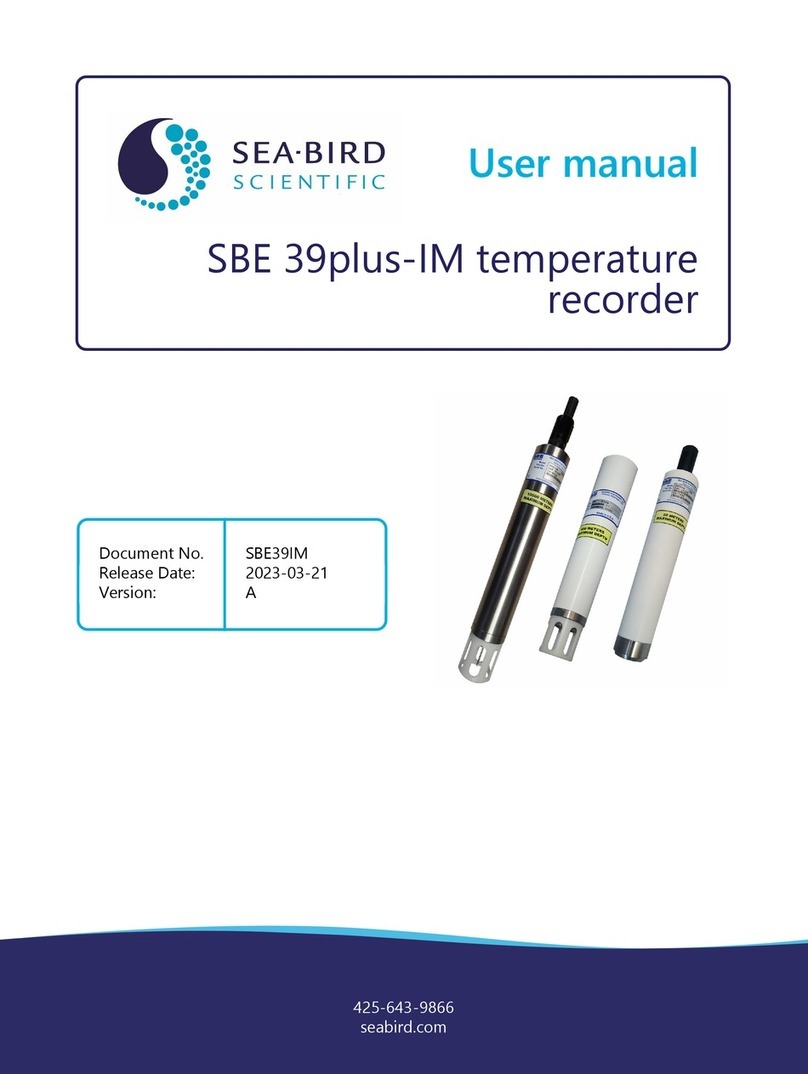
Sea-Bird Scientific
Sea-Bird Scientific SBE 39plus User manual
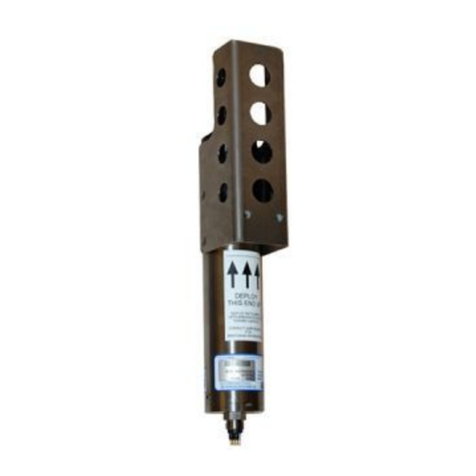
Sea-Bird Scientific
Sea-Bird Scientific SBE 37 MicroCAT Quick manual

Sea-Bird Scientific
Sea-Bird Scientific SUNA V2 User manual

Sea-Bird Scientific
Sea-Bird Scientific SBE 11plus V2 User manual

Sea-Bird Scientific
Sea-Bird Scientific WQM-a User manual

Sea-Bird Scientific
Sea-Bird Scientific ECO-FLNTUS User manual
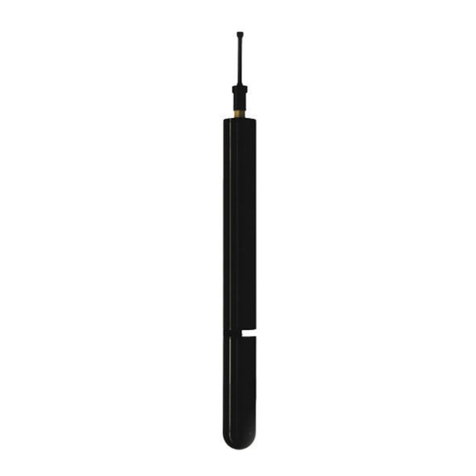
Sea-Bird Scientific
Sea-Bird Scientific SUNA V2 User manual
